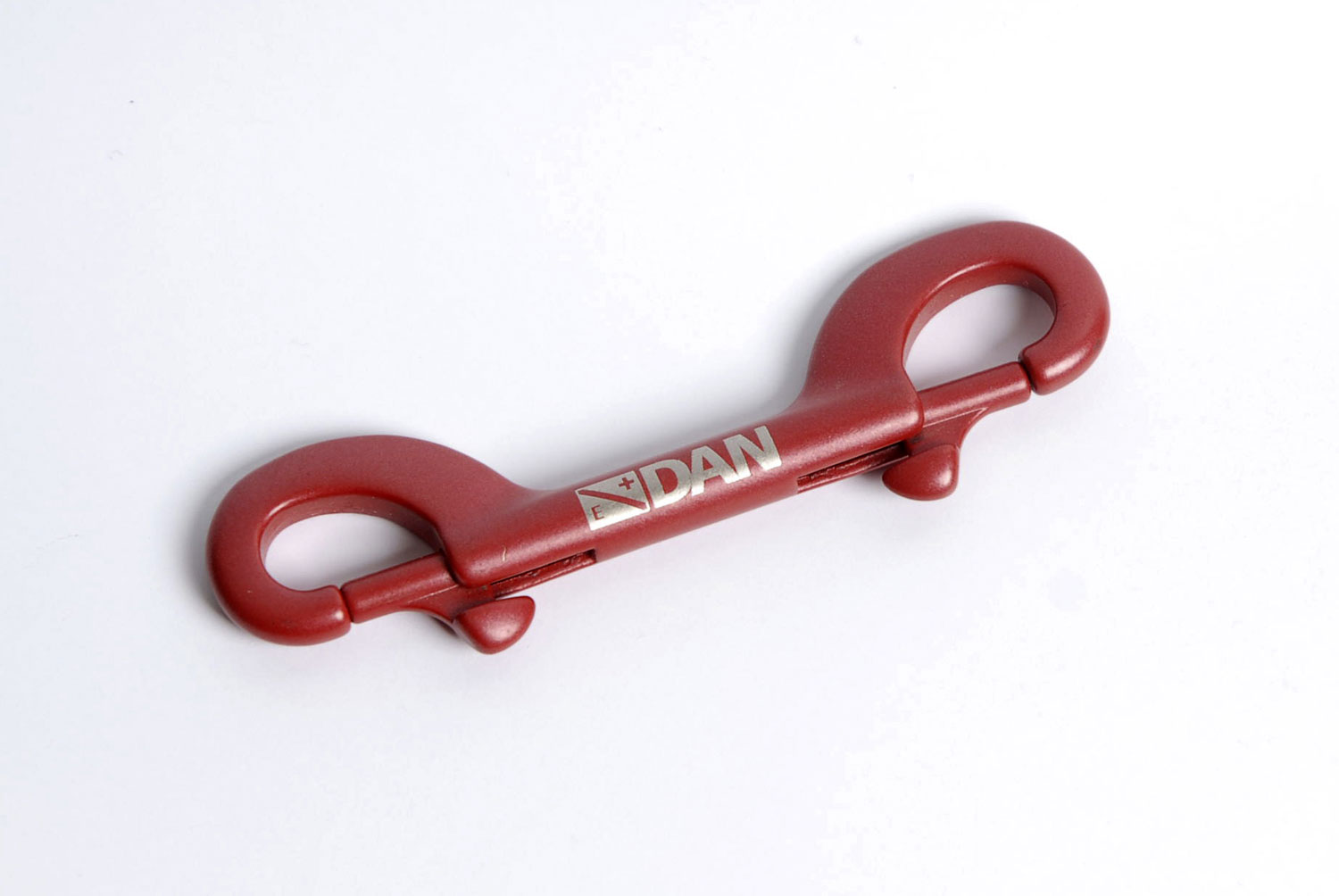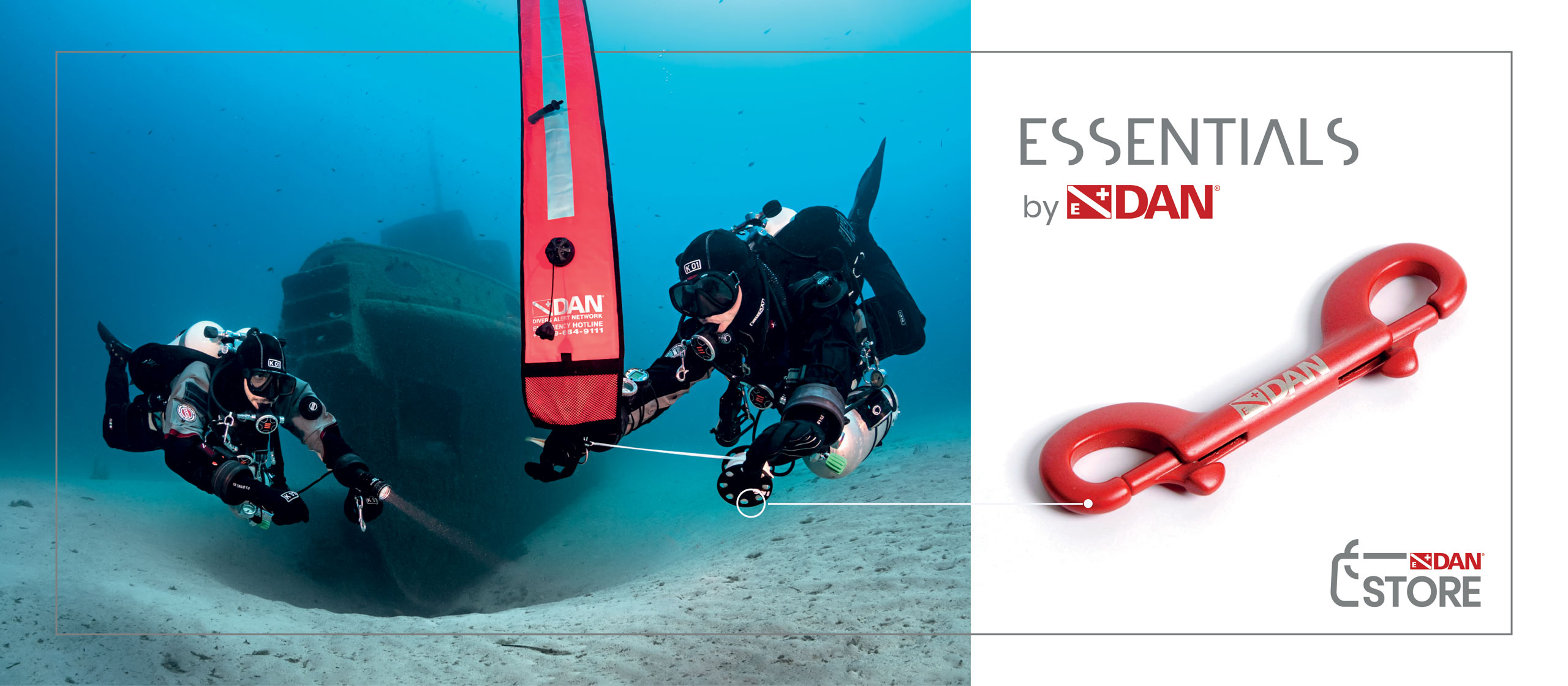Safety
How to use a double ended bolt snap
The double-ended bolt-snap carabiner (or double ender, in the lingo) is one of the tools in diving that you never knew you needed, until you actually needed one. It has this characteristic in common with your DAN Europe insurance, which is why we thought it might make a great gift for our valued members.
Like most things, double enders come in a variety of shapes and sizes, but the most important feature is the material: 316 marine grade stainless steel. Some cheap versions (often sold packaged with spools) are made of brass. While seemingly fine at first, they usually corrode over time to the point of becoming stuck and unusable. Stainless steel is what you want.
Tech divers typically keep one double ender attached to every reel or spool they carry, and one extra that has its permanent place of residence on the right shoulder D-ring of the harness. Some sidemount divers carry even more (close to their own body weight, it seems, in some cases) and use them to attach a multitude of equipment parts to their gear – the butt pouch, drained cylinders, pretty much anything you might come up with. Recreational divers usually want at least one, as part of their diver surface marker buoy (DSMB) and spool assembly.
Before the DSMB is deployed, one end of the carabiner keeps the spool and buoy together (preventing the spool from unraveling and saving you from the mockery of your buddies), while the other end attaches the spool and DSMB to whatever you keep your spool and DSMB attached to – a D-ring on the harness, or a bungee loop inside your drysuit pouch, for example.
When the DSMB is deployed, the double ender has the important task of locking the spool and keeping the line at a fixed length, so that the spool hangs at a fixed distance (your current stop depth) from the surface. This way you won’t have to look at your computer all the time to make sure you maintain the proper depth – you get tactile feedback about your depth from the spool that is bouncing just underneath your hand.

An essential tool – Not just for tech
Double enders are also an essential tool for any line work that you might do as a wreck or cave diver, and the extra double ender (besides acting as a spare for any of the above tasks) comes in handy for clipping off your GoPro or other small camera that you might be carrying.
As with all tools, there is a skill to using them. In case of the bolt snap, you will want to learn how to clip them off one-handed: The thumb operates the gate lever, your three outside fingers hold the double ender by the shaft, and the index finger is extended to locate the D-ring by touch. This leaves your other hand free to keep your light steady, and your eyes free to pay attention to your buddy or teammates. There are more tricks – how to clip them to a spool from the outside so they don’t open by themselves, and a whole list of techniques for line work in overhead (i.e., wreck and cave) diving.
We hope that you enjoy our little gift* and feel inspired to become proficient in its use.
Safe diving, always,
your DAN Europe Team
*The new DAN Europe double-ended bolt snaps are quality products made in Italy and available in 4 versions: classic stainless steel and ceramic-coated stainless steel (red, black, blue). A DAN-branded double ender will be handed out as a gift to all new and renewing members signing up with DAN Europe at selected dive shows and dive events throughout 2023. These double enders are also available for purchase in the new DAN Europe online Store.
About the author
Tim Blömeke teaches technical and recreational diving in Taiwan and the Philippines. He is also a freelance writer and translator, as well as a member of the editorial team of Alert Diver. For questions, comments, and inquiries, you can contact him via his blog page or on Instagram.

